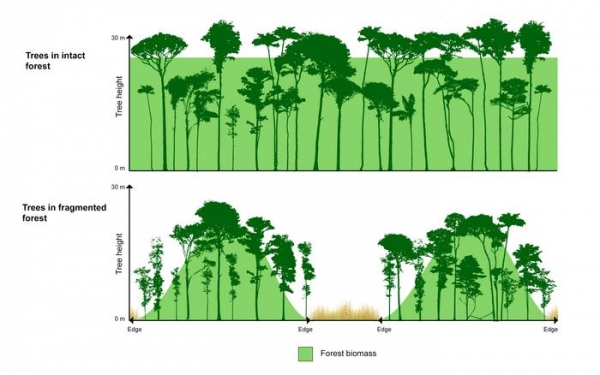Using laser scanning, researchers at the University of Helsinki have mapped out how the fragmentation of forests affects tree shape in the rainforests of Brazil. The results are surprising, as they shed light on the impact of human activity on the tropical environment and, consequently, on climate change in a new way.
Because of clear-cutting, the area of undisturbed rainforests is decreasing. At the edges of deforested areas, temperatures rise, and there is more light. Trees are able to adapt to changes in their living conditions and environment, but how does environmental change affect the shape of trees in the tropical rainforest? There has been no overall understanding of this so far.
Associate Professor Eduardo Maeda from the University of Helsinki coordinated an international project investigating tree shapes on the edges of the tropical rainforest. Matheus Nunes, who previously worked at the University of Helsinki and is now active at the University of Maryland, headed a study where data were collected through terrestrial laser scanning to model Amazonian trees.
Read more at: University of Helsinki
Point cloud of trees growing deep in the forest (above) and in fragmented forests in Central Amazonia, obtained using highresolution terrestrial laser scanning (TLS). The green area represents the amount of biomass. (Photo Credit: Jani Naerhi)


